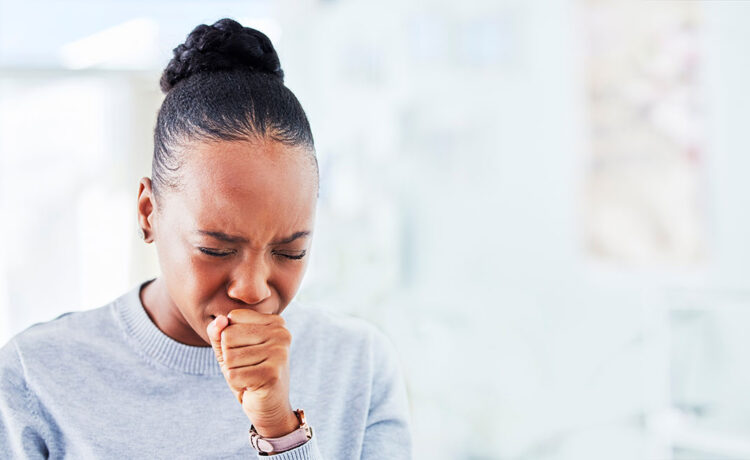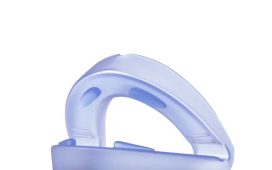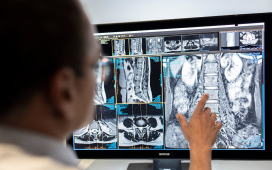Pulmonary rehabilitation is a comprehensive intervention based on a thorough patient assessment followed by patient-tailored therapies, which include, but are not limited to, exercise training, education, and behavior change, designed to improve the physical and psychological condition of people with chronic respiratory disease and to promote the long-term adherence to health-enhancing behaviors.
- Exercise training is the cornerstone of pulmonary rehabilitation programs, aiming to improve the overall endurance and muscle strength, thus reducing the symptoms of breathlessness.
- Education about lung disease and its management is crucial for empowering patients to take an active role in their care.
- Behavior change, including strategies to prevent lung cancer, is an essential component, with smoking cessation being a top priority.
Individuals with chronic respiratory diseases, such as chronic obstructive pulmonary disease (COPD), interstitial lung disease, or cystic fibrosis, can benefit from lung rehabilitation. Moreover, those who have undergone lung surgery or suffer from neuromuscular diseases affecting the respiratory system may also find relief and improvement in their quality of life.
An effective lung rehabilitation program should be tailored to the individual’s needs and may include a multidisciplinary team of healthcare professionals. The team typically comprises respiratory therapists, physical therapists, occupational therapists, dietitians, and psychologists, who work together to create a comprehensive plan that addresses the physical, nutritional, and emotional aspects of lung health.
- Setting realistic goals
- Providing individualized treatment plans
- Offering support for managing symptoms
- Encouraging long-term health maintenance
These are the key components that contribute to the success of a lung rehabilitation program. By addressing these elements, patients are more likely to experience an improvement in their symptoms, an increase in their physical activity levels, and a better overall quality of life.
Breathing Techniques for Improved Lung Function
Pursed-Lip Breathing
Pursed-lip breathing is a simple yet effective technique designed to make each breath more efficient. By inhaling through the nose and exhaling through pursed lips, this method slows down the breathing rate and helps to keep the airways open longer, making it easier for the lungs to function and improving the exchange of oxygen and carbon dioxide.
- Inhale slowly through the nose for about two seconds.
- Pucker the lips as if to whistle.
- Exhale slowly and gently through pursed lips for about four to six seconds.
Diaphragmatic Breathing
Also known as belly breathing, diaphragmatic breathing engages the diaphragm, which is supposed to do most of the work when it comes to breathing. This technique can be particularly beneficial for individuals with chronic obstructive pulmonary disease (COPD) as it strengthens the diaphragm and requires less effort from other muscles.
- Lie down or sit comfortably, with one hand on the belly and the other on the chest.
- Inhale deeply through the nose, ensuring the diaphragm inflates and the belly rises.
- Exhale slowly through pursed lips, pressing on the belly to help expel air.
Coordinated Breathing
Coordinated breathing is crucial during physical activity to prevent breathlessness and to maximize oxygen intake. It involves timing breaths with movements, which can help maintain a steady breathing pattern and reduce the work of breathing.
- Inhale before starting a movement that requires effort.
- Exhale while performing the movement.
Deep Breathing Exercises
Deep breathing exercises aim to increase lung capacity and improve the efficiency of the lungs. These exercises can also help clear the airways and reduce the risk of respiratory infections.
- Sit or stand with elbows slightly back, which allows for chest expansion.
- Take a deep breath in, expanding the lungs fully.
- Hold the breath for a count of five.
- Exhale slowly and completely, contracting the abdominal muscles to ensure all air is expelled.
Incorporating Exercise into Lung Rehabilitation
Exercise plays a crucial role in the overall strategy for lung rehabilitation. It not only improves cardiovascular health but also enhances lung capacity and efficiency. A well-rounded exercise regimen can lead to significant improvements in the quality of life for individuals with pulmonary conditions.
The Role of Physical Activity in Pulmonary Health
Regular physical activity is essential for maintaining and improving lung function. It helps clear the airways, strengthens the respiratory muscles, and boosts the immune system. For those undergoing lung rehabilitation, exercise should be tailored to their specific needs and abilities, ensuring safety and effectiveness.
Types of Exercises Recommended for Lung Patients
A variety of exercises can be beneficial for lung patients, including:
- Aerobic exercises such as walking, cycling, and swimming, which increase heart rate and improve oxygenation of the blood.
- Strength training to build muscle endurance, particularly in the upper body, which can aid in breathing.
- Flexibility exercises like stretching, which can improve the range of motion and reduce the risk of injury.
Each type of exercise contributes to the overall lung rehabilitation process, and a combination of these can yield the best results.
Creating a Personalized Exercise Plan
Developing a personalized exercise plan is a key step in lung rehabilitation. This plan should take into account the individual’s current health status, goals, and preferences. It often involves a gradual increase in activity levels, monitored by healthcare professionals, to ensure that the exercises are both safe and beneficial.
By incorporating regular exercise into their rehabilitation program, individuals with lung conditions can work towards restoring their pulmonary health and enhancing their overall well-being.
The Psychological Aspect of Lung Rehabilitation
Managing Stress and Anxiety
In the journey of lung rehabilitation, managing stress and anxiety is crucial. Patients are encouraged to engage in stress-reduction techniques such as progressive muscle relaxation, guided imagery, and breathing exercises tailored to alleviate tension. Support groups, including those facilitated by organizations can provide a communal space to share experiences and coping strategies.
The Importance of Mental Health in Physical Recovery
Mental health is inextricably linked to physical health, particularly in the context of lung rehabilitation. A positive mindset can significantly enhance the body’s ability to heal and respond to treatment. Incorporating cognitive-behavioral therapy (CBT) and counseling can help patients adjust to lifestyle changes and cope with the emotional impact of chronic lung conditions.
Mindfulness and Relaxation Techniques
Mindfulness and relaxation techniques are integral to lung rehabilitation programs. These practices, including meditation, yoga, and tai chi, can improve lung function by reducing stress levels and promoting a sense of well-being. Regular practice can lead to better breathing patterns and increased lung capacity.
Monitoring Progress and Maintaining Lung Health
Setting Realistic Goals and Tracking Improvement
For individuals undergoing lung rehabilitation, setting achievable goals is crucial. These goals should be specific, measurable, attainable, relevant, and time-bound (SMART). Patients are encouraged to track their progress through regular assessments, which can include:
- Monitoring daily symptom changes
- Recording exercise capacity with a six-minute walk test
- Using spirometry to measure lung function over time
Regular check-ins with healthcare providers can help adjust goals as needed and ensure that patients remain on track.
Long-term Strategies for Lung Health Maintenance
Maintaining lung health after rehabilitation requires a long-term commitment to lifestyle changes and self-care. Key strategies include:
- Continuing with prescribed breathing exercises
- Avoiding pollutants and irritants, such as smoke and strong fumes
- Getting annual flu shots and staying up-to-date with vaccinations
- Following a balanced diet rich in antioxidants and anti-inflammatory foods
These practices help sustain the benefits of rehabilitation and prevent further lung damage.
When to Seek Professional Help
While self-monitoring is important, there are times when professional medical assistance is necessary. Patients should seek help if they experience:
- A significant increase in shortness of breath
- Persistent coughing or changes in sputum
- Unexplained weight loss or fatigue
Recognizing these signs early and consulting with a healthcare provider can prevent complications and ensure timely interventions.











